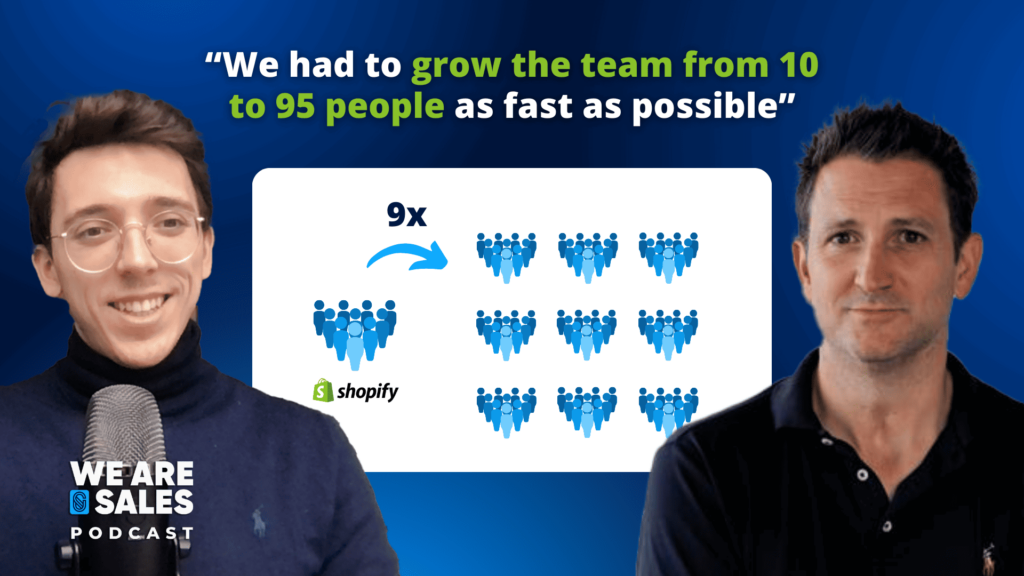Share:
Shopify EMEA’s 3 Core Hiring Principles

This is how Shopify EMEA grew the sales department from 10 to 95 in 18 months 👇
We invited Jim Rudall, ex-Head of Revenue EMEA at Shopify and currently Head of EMEA at Intuit Mailchimp, on the podcast to unpack that story.
Back in 2020, there was a huge opportunity for Shopify in our region. They had to grow fast. For Jim that meant growing a sales department from 10 to 95 people in a period of 18 months.
What’s more, the initial team was solely working on inbound and focused on 1 country and 1 segment only. With the new team, the goal was to create demand in different countries and different segments.
Listen to the entire episode here. Or, read along to get Jim’s 3 key principles in hiring successfully.
Want more articles like this one directly in your mailbox?
Principle #1 – Get crystal clear on the Ideal Talents Profile
Since they had so many problems to solve for – new countries, new segments, new motions – they had to get really clear on key skills to hire for.
“We had to expand the craft and the expertise that we were looking for and get clear on (1) where do we need brand new skills that we do not possess already and (2) where are we happy to hire more junior talents?”
For example, selling to higher segment and cross- & upselling to installed base were totally new to the EMEA team. That made them look for experienced professionals. In contrast, they also hired more “raw” talents for the roles where they already had enough experience within the team.
Next, they also had to drill down on what would make, fundamentally, a Shopify sales exec successful. Not just from a target-revenue perspective, but also from a build perspective.
Hence, the following principle.
Principle #2 – One key attribute above all else: how much do they thrive in a changing environment?
From the start, it was clear to Shopify EMEA that much was going to change on the go:
“The idea has always been that you would join a rapidly growing team and that you would need to be successful as a part of that evolving ecosystem. Therefore, the goal was to find people who genuinely thrive in a constantly changing environment.”
However, how do you find out if someone genuinely thrives in these circumstances? Because be aware:
“The problem is that you cannot ask the question ‘are you comfortable with change?’. 99% of the time, especially in sales, the answer is ‘yes’. It’s sort of the stock response”.
Ultimately, they had to figure out a series of questions and a route of questioning which uncovered people who were not just comfortable with change, but actively seeking change out.
“We dug deeper to understand if they, deliberately, through their own activity, their own decisions, put themselves in difficult positions outside of their comfort zone to make significant changes in their life or in their career.”
Principle #3 – Forget about “culture-fit”, instead focus on “culture-add”
Jim has never been a fan of the term “cultural-fit” and this is why:
“I think it’s a misused term because when used incorrectly, you end up adding people into your team who are similar to the people you’ve already got, right? It’s almost anti-diversity if used incorrectly.”
So, instead, they focused on the idea of “culture-add”:
“Who are we gonna add into our business that will evolve and develop the culture that we already have, instead of simply slotting in to the culture that has existed until that point.”

